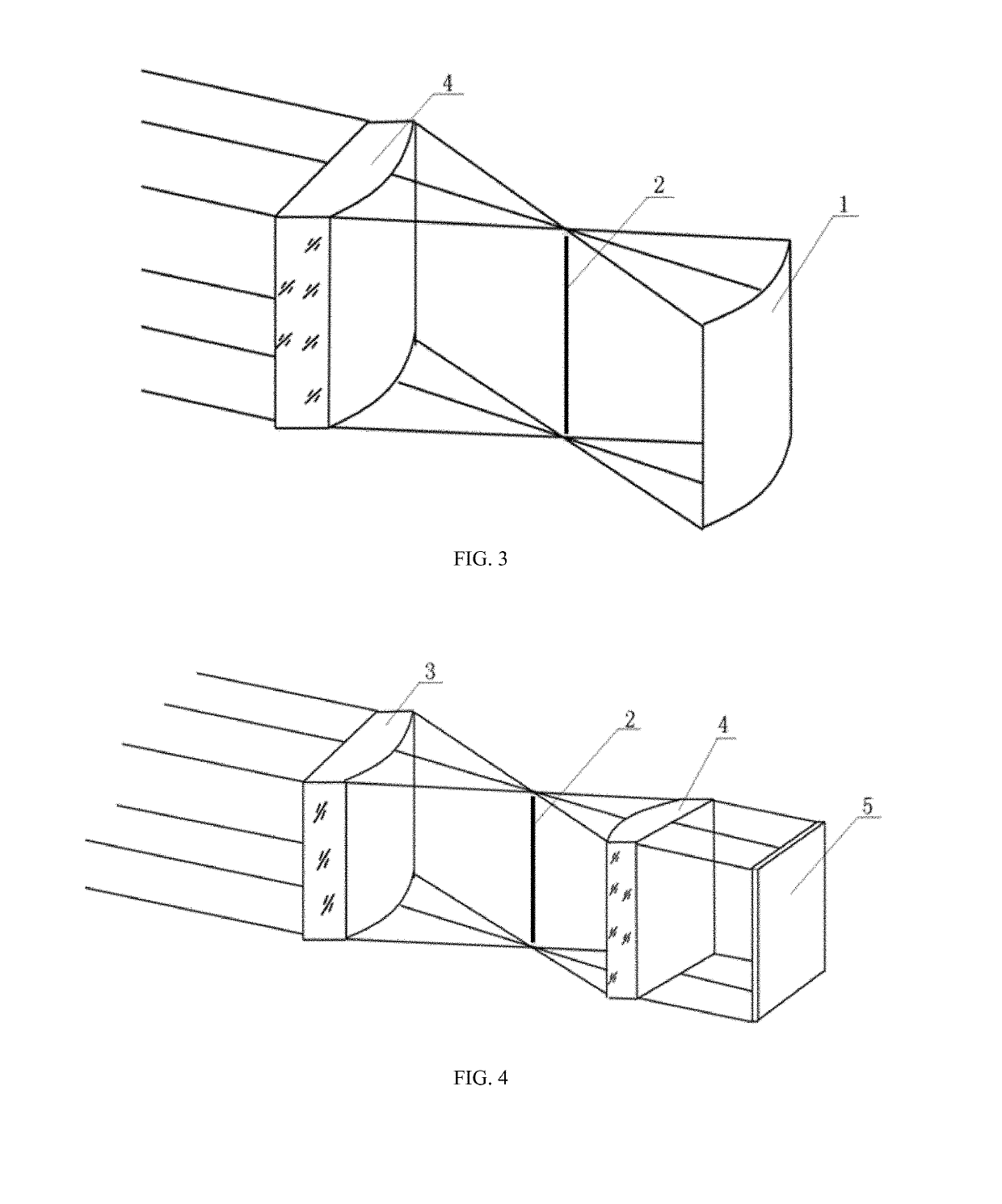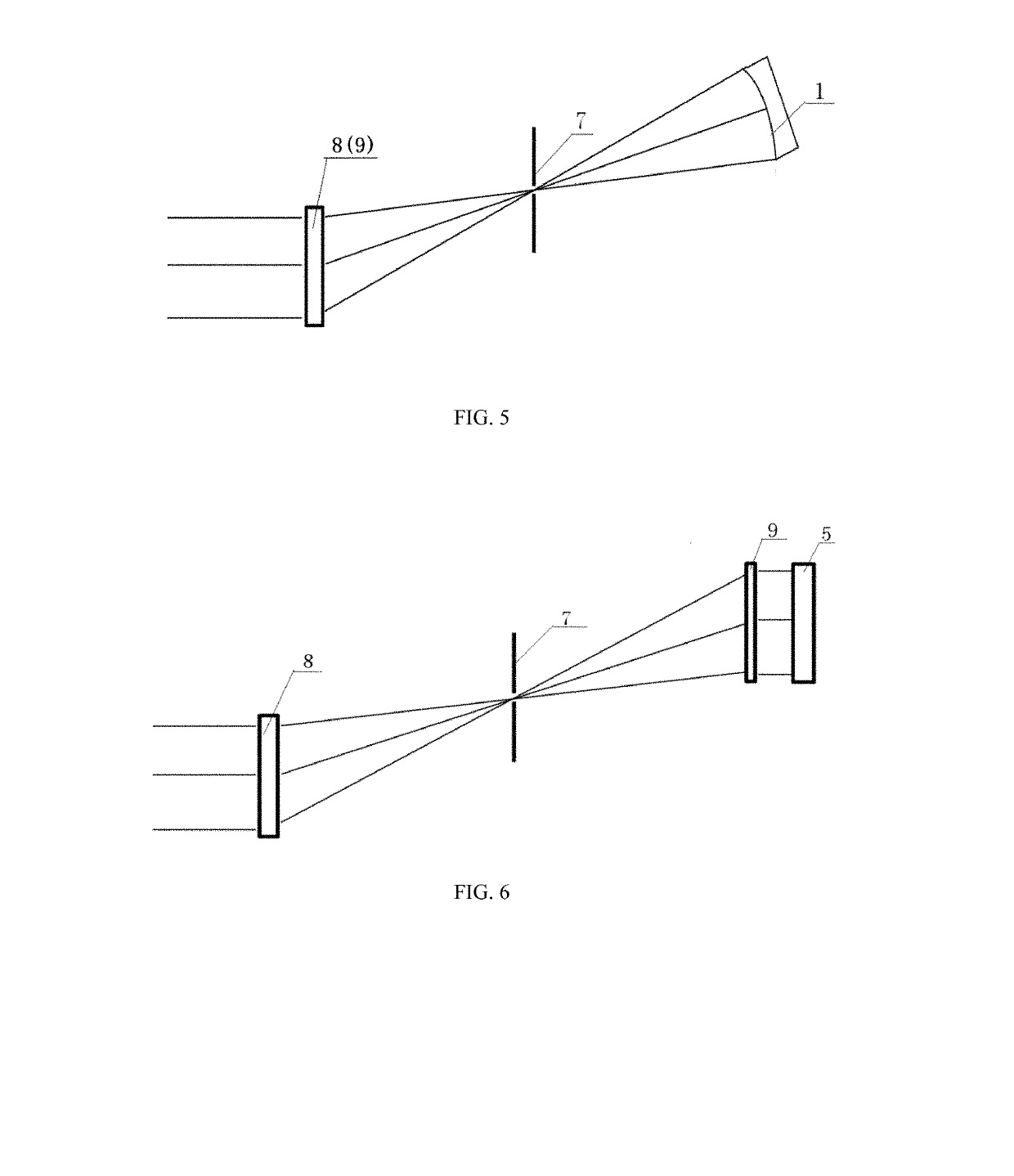Method and apparatus for detecting cylinder and cylindrical converging lens
a cylindrical shape and detection technology, applied in the field of optical instrument detection, can solve the problems of cylinder application restrictions, cylinder detection technology development relatively slowly, and generally cannot meet current application requirements, so as to reduce the processing and detection difficulty of the detection tool and reduce the number of system errors in measuremen
- Summary
- Abstract
- Description
- Claims
- Application Information
AI Technical Summary
Benefits of technology
Problems solved by technology
Method used
Image
Examples
embodiment 1
[0057 provides a method for detecting a cylinder and a cylindrical converging lens, including the following steps:
[0058]Step 1) is a step of collecting wavefront error data of a combination of a first cylindrical converging lens 3 and a to-be-tested cylinder 1. As shown in FIG. 2 and FIG. 8, a commercial digital wavefront interferometer, the first cylindrical converging lens 3, and the to-be-tested cylinder 1 are sequentially arranged in a direction of an optical axis. A 4-inch plane standard lens is selected as a standard lens of the interferometer and is configured to provide parallel light. A focal length of the first cylindrical converging lens 3 is 100 mm. The first cylindrical converging lens 3 enables wavefronts of parallel light to converge into a cylindrical wave and intersect at a focal line 2. The to-be-tested cylinder 1 is a concave cylinder having a curvature radius of 45 mm. The position of the to-be-tested cylinder is adjusted to enable a center line of curvature of t...
embodiment 5
[0065 provides an apparatus for detecting a cylinder and a cylindrical converging lens. As shown in FIG. 7, the apparatus includes a horizontal substrate 14, a first adjusting frame 10, a second adjusting frame 11, and a third adjusting frame 12 that are disposed on the horizontal substrate 14, a horizontal rotating platform 13 fixed on the second adjusting frame 11, a first cylindrical converging lens 3 disposed on the first adjusting frame 10, a second cylindrical converging lens 4 disposed on the rotating platform 13, and a to-be-tested cylinder 1 and a standard planar reflector 5 that are clamped on the second adjusting frame 11.
[0066]The first cylindrical converging lens 3 is optically coaxial with the second cylindrical converging lens 4 and the standard planar reflector 5 to form a first combined test area 15. The first cylindrical converging lens 3 is optically coaxial with the to-be-tested cylinder 1 to form a second combined test area 16. The second cylindrical converging ...
PUM
 Login to View More
Login to View More Abstract
Description
Claims
Application Information
 Login to View More
Login to View More - R&D
- Intellectual Property
- Life Sciences
- Materials
- Tech Scout
- Unparalleled Data Quality
- Higher Quality Content
- 60% Fewer Hallucinations
Browse by: Latest US Patents, China's latest patents, Technical Efficacy Thesaurus, Application Domain, Technology Topic, Popular Technical Reports.
© 2025 PatSnap. All rights reserved.Legal|Privacy policy|Modern Slavery Act Transparency Statement|Sitemap|About US| Contact US: help@patsnap.com



